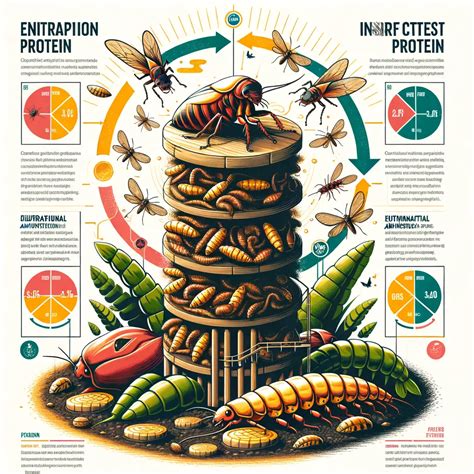Introduction
Insect farming, a burgeoning industry with immense potential, faces significant challenges that impede its widespread adoption. To meet the growing demand for sustainable protein sources, the industry must overcome these hurdles. Feed formulation plays a pivotal role in insect rearing, directly impacting growth, production efficiency, and nutritional value.

Insect Farming Challenges
1. Feed Availability and Sustainability
Insect feed comprises various organic materials, including animal manure, food waste, and plant byproducts. However, ensuring a consistent and sustainable supply of these feedstocks poses challenges. The competition for these resources from other industries, such as livestock production and biofuel production, can drive up costs and limit availability.
2. Feed Quality and Biosecurity
Improper feed quality can compromise insect health and growth, leading to reduced production yields. Additionally, feed contamination with pathogens or pesticides can spread diseases within insect colonies. Maintaining feed hygiene and implementing biosecurity measures is crucial for ensuring insect welfare and preventing the transmission of diseases to humans or other animals.
3. Scale-up Limitations
Scaling up insect farming operations to meet the projected demand requires significant investment in infrastructure and production systems. Challenges arise in maintaining the efficiency and quality of feed production at a large scale. Moreover, the labor intensiveness of insect farming poses hurdles in terms of automation and cost-effectiveness.
Feed Formulation
1. Nutrient Requirements
Insects have specific nutrient requirements that vary depending on their species and developmental stage. Formulating feed that meets these nutritional needs is crucial for optimal growth and production. Protein, carbohydrates, lipids, vitamins, and minerals must be balanced to ensure a healthy and productive insect population.
2. Feed Digestion and Absorption
Insects have unique digestive systems that require specific feed formulations. The form, particle size, and digestibility of feed ingredients must be carefully considered to optimize nutrient uptake. Certain feed additives, such as enzymes, can enhance digestive efficiency and improve nutrient utilization.
3. Feed Consumption and Efficiency
Feed consumption and efficiency directly impact insect production costs. Formulating feed that is highly palatable and digestible reduces feed waste and improves conversion rates. Understanding the feeding behavior and preferences of different insect species is essential for optimizing feed formulation.
Strategies for Overcoming Challenges
1. Feed Diversification and Innovation
Exploring alternative feed sources, such as food processing waste and agricultural byproducts, can alleviate the dependence on traditional feedstocks and reduce costs. Innovation in feed processing technologies can enhance the nutritional value and digestibility of feed, promoting insect growth and production efficiency.
2. Enhanced Biosecurity Measures
Implementing stringent biosecurity protocols, including feed sterilization and regular sanitation, mitigates the risk of disease transmission within insect colonies. Monitoring feed quality and adhering to ethical practices ensure the safety and welfare of insects, ultimately protecting the industry from disease outbreaks.
3. Collaboration and Investment
Collaboration between researchers, industry stakeholders, and policymakers is essential to develop sustainable and scalable insect farming systems. Government incentives, research grants, and private investments can stimulate innovation and facilitate the growth of the industry.
4. Market Demand and Education
Creating consumer demand for insect-based products through education and awareness campaigns plays a crucial role in driving the insect farming industry. Highlighting the environmental and nutritional benefits of insects can change perceptions and increase market acceptance.
Future Outlook
By 2025, insect farming is projected to become a significant player in global food production, providing a sustainable and environmentally friendly source of protein. Overcoming the challenges in feed availability, quality, and formulation is essential to realizing the full potential of this emerging industry. Innovations in feed technology, collaboration, and consumer demand will drive the growth and success of insect farming.
Tables
Table 1: Feed Ingredients for Common Insect Species
| Insect Species | Feed Ingredients |
|---|---|
| Black soldier fly | Food waste, manure, plant byproducts |
| Mealworm | Wheat bran, cornmeal, vegetables |
| Cricket | Alfalfa, grains, vegetables |
Table 2: Nutrient Requirements of Insects
| Nutrient | Requirement |
|---|---|
| Protein | 20-40% |
| Carbohydrates | 30-50% |
| Lipids | 10-20% |
| Vitamins | As per species |
| Minerals | As per species |
Table 3: Strategies for Enhancing Feed Consumption and Efficiency
| Strategy | Description |
|---|---|
| High-palatability feed | Formulating feed with attractive flavors and aromas |
| Optimal particle size | Adjusting feed particle size to facilitate ingestion |
| Enzyme supplementation | Adding enzymes to improve nutrient digestibility |
Table 4: Benefits and Challenges of Insect Farming
| Benefits | Challenges |
|---|---|
| Sustainable protein source | Feed availability |
| Reduced environmental impact | Feed quality |
| High nutritional value | Scale-up limitations |





















